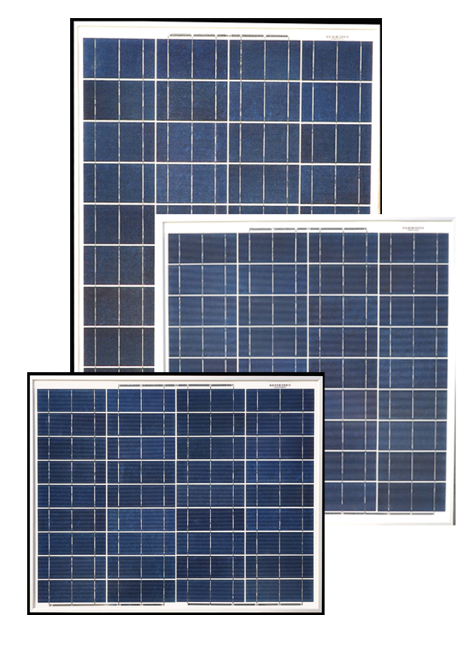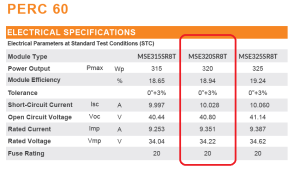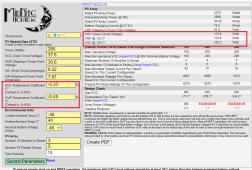SolarHead
50% of people are below average. (Its a statistic)
I got new solar panels in last week. How (should) I test each one before installing them?

YesThanks for the reply. So........ a short circuit test means taking the + and - leads on one solar panel and connecting them to each other, then clamping my multimeter clamp around the wire to get an AMP reading. Correct?
It doesn't. But it's OK in a solar panel case because it's not like a battery that can jump to 100(s) of amps - a panel just maxes out at it's max amps - e.g. 9a or whatever it's rated for.I kept reading and seeing "Short Circuit" on things but have never understood what it meant. When does a panel ever short circuit itself (other than during a test) ?
It is a real world test - it shows the MAX the panel can deliver.Doesn't seem like a real world test since they are never short circuited, or at least I don't think they are.
It does not hurt the panel at all because the max amps is what the panel is designed to deliver continuously - e.g. won't burn up wiring or diodes or hurt the silicon wafers.I suppose in the combiner box if a wire got sliced by accident and they touched but sounds like that would arc and be a really big problem especially if you have multiple panels going to the combiner box. I would have thought plugging a panels 2 wires into each other would have caused damage to a panel.

okay not trying to be complicated, but where does cold temperature come into play? I mean if I get a short circuit test, is that the highest the panel can ever produce, or can it go higher in cold weather (I've read or heard where panels produce more power the colder it gets which makes me wonder why they don't make white solar panels and not black but that's another subject/question).It is a real world test - it shows the MAX the panel can deliver.
Now I think they don't include a post-it note on some products. You get a business card size card with a QR code on it, which is smaller than most post-it notes.They would sell a lot more meters if they included a text book instead of a post-it note.

In my setup, I'm configured with 3s5p running to each combiner box with 15a circuit breakers. Each set of wires (and circuit breaker) represents 3s1p string. I have 5 x string = 5 x 15a circuit breakers in each combiner box. 15a is plenty because the panels max out <10a. When you put panels in series, the voltage goes up but the amps remain the same.I just noticed on my panels spec sheet, they say Fuse Rating of 20, I assume that's a 20amp fuse , I'm using 15A fuses, is that going to be okay? I have fuse holders in my combiner boxes.
Extremely cold temps like -50F/-45C can cause the voltage to rise significantly to the point where it exceeds the max voltage your charge controller allows - and blow it up. So there's typically a coefficient specification to help you calculate this so you size your strings (of panels) correctly for your charge controller. This is not about power - its about the max voltage you're charge controller is designed to handle before it blows up.okay not trying to be complicated, but where does cold temperature come into play?

It's true, panels are more likely to hit 100% of specs if it's cooler - because they're tested (to get the specs) at cooler temps. When it's 120F/49C on the roof, the efficiency goes down - maybe 10% of so.in cold weather (I've read or heard where panels produce more power the colder it gets
Yes sir - there's much discussion on things like this and way to cool the panels etc etc... but invariably they cost $ and it's likely cheaperto add an extra panel to make up for the 10% loss. It's when you have space constraints (can't add panels) that this topic becomes more interesting?which makes me wonder why they don't make white solar panels and not black but that's another subject/question).
I think the coldest it gets around here would be -5F but thats rare, most winters get down to around 5F but usually 10F to 20F is coldest of winters, we typically see about 30F all winter. Some nights might dip to 12F. Sounds like I dont need to worry about cold temps in my design or configuration (sounds non issue based off what you mentioned above).Assuming you also run Xs series of panels -> combiner box, then the max you'll have is 9.351a and a 15a fuse/breaker will be OK. There's no magic here. A 9.351a panel is not going to produce any more than that

This kind of thinking will take you into SOCD (Solar Obsessive Compulsion Disorder)! I know - I fight it all the time myself. But remember, the slightest cloud will cause a 5% drop or fog or in my area wild-fire smoke and on and on and on.... THEN you have system losses, inverter being one of the largest.Yea, I watched a meter on one panel one time and was surprised how sensitive that sweet spot is with tilt and direction. It was interesting to see, but also concerning because I had spent good money on panels, and there I was getting ready to bolt them down to a ground mount to one tilt angle, and one direction and never to move or adjust them again. I was like man, a sun tracker would be the crap, but they are too expensive and I read where its cheaper just to buy more panels if you want/need more power. I get that, but really, I mean, if its a sweet spot sure is a shame not to be able to point directly at the sweet spot all day long. I think that's why guys in RV's have the portable solar panels so they can move them multiple times a day and get optimal power from them as opposed to mounting them on the roof of a camper. Just have to worry with lugging them around, and theft if they are portable.

Aren't ya glad I tossed that thought out there? It will help you sleep tonight.I wonder why something like this that's fixed wouldn't work instead of a motorized/mechanical tracker. The sun moves, but the mirrors are there designed for the suns movement. It probably wont work, sun isn't always same spot as the seasons change. Maybe Mr. Musk will figure out how to get a solar panel on a satellite and its in the sun 100% of the time, and beam the power down to Earth. This sun up , sun down thing ever since I plugged my system up 4 weeks ago is driving me bat crap. I didn't use to watch or think about clouds at all, now I hate clouds.


